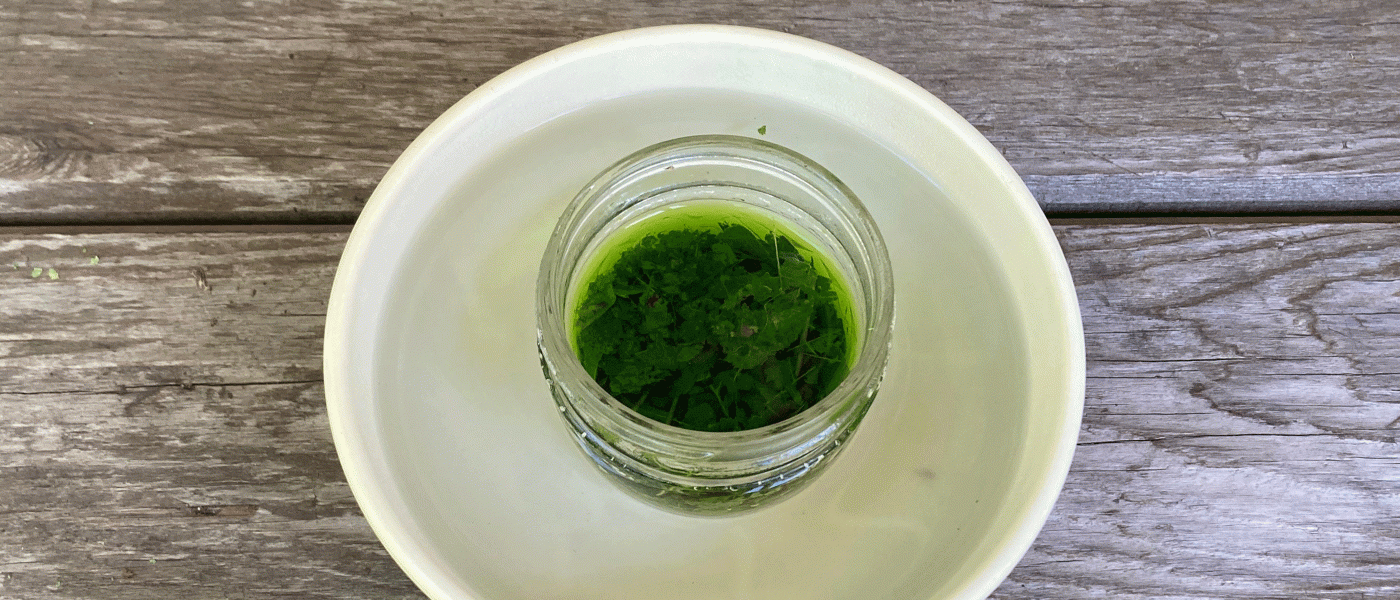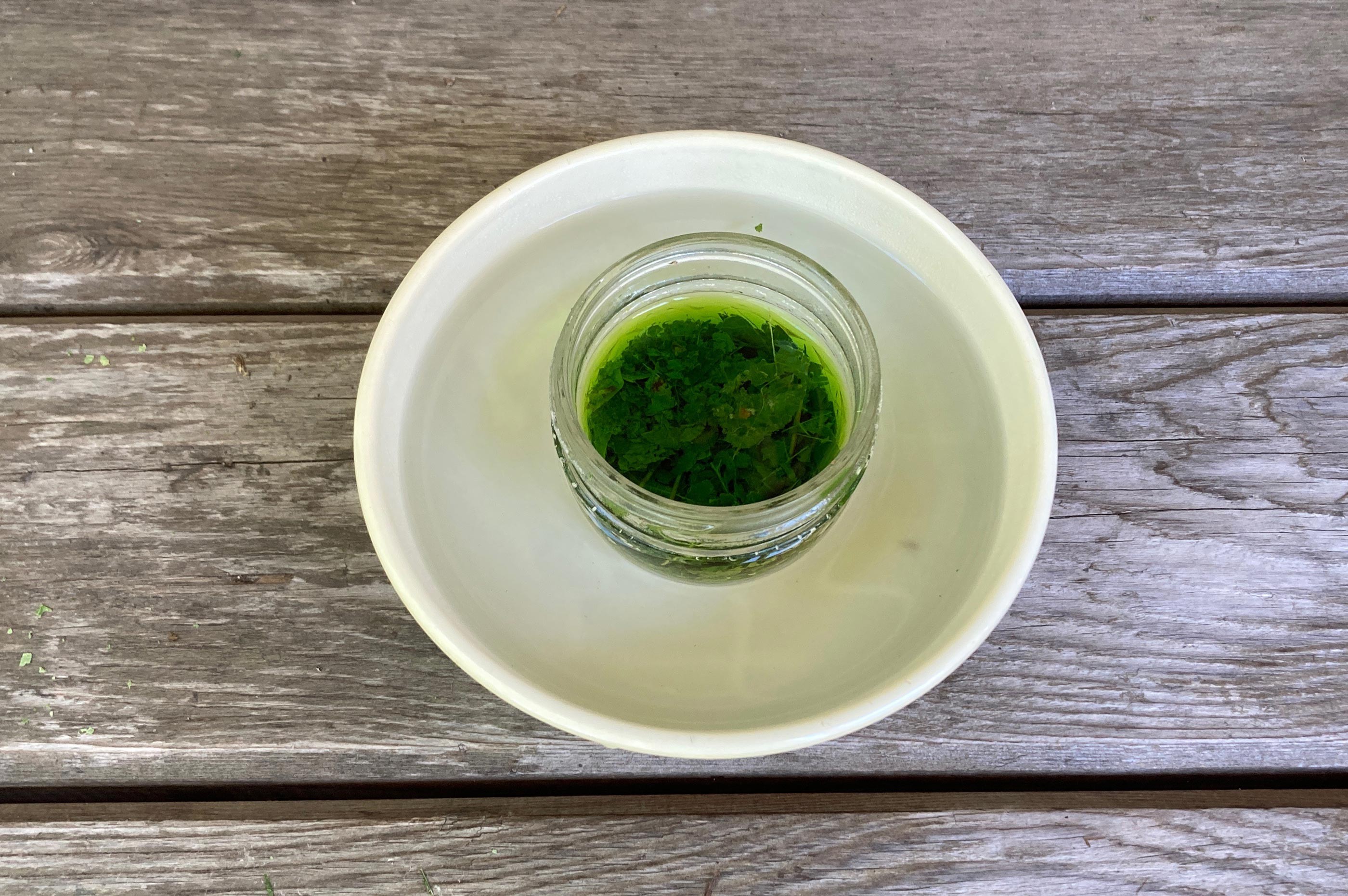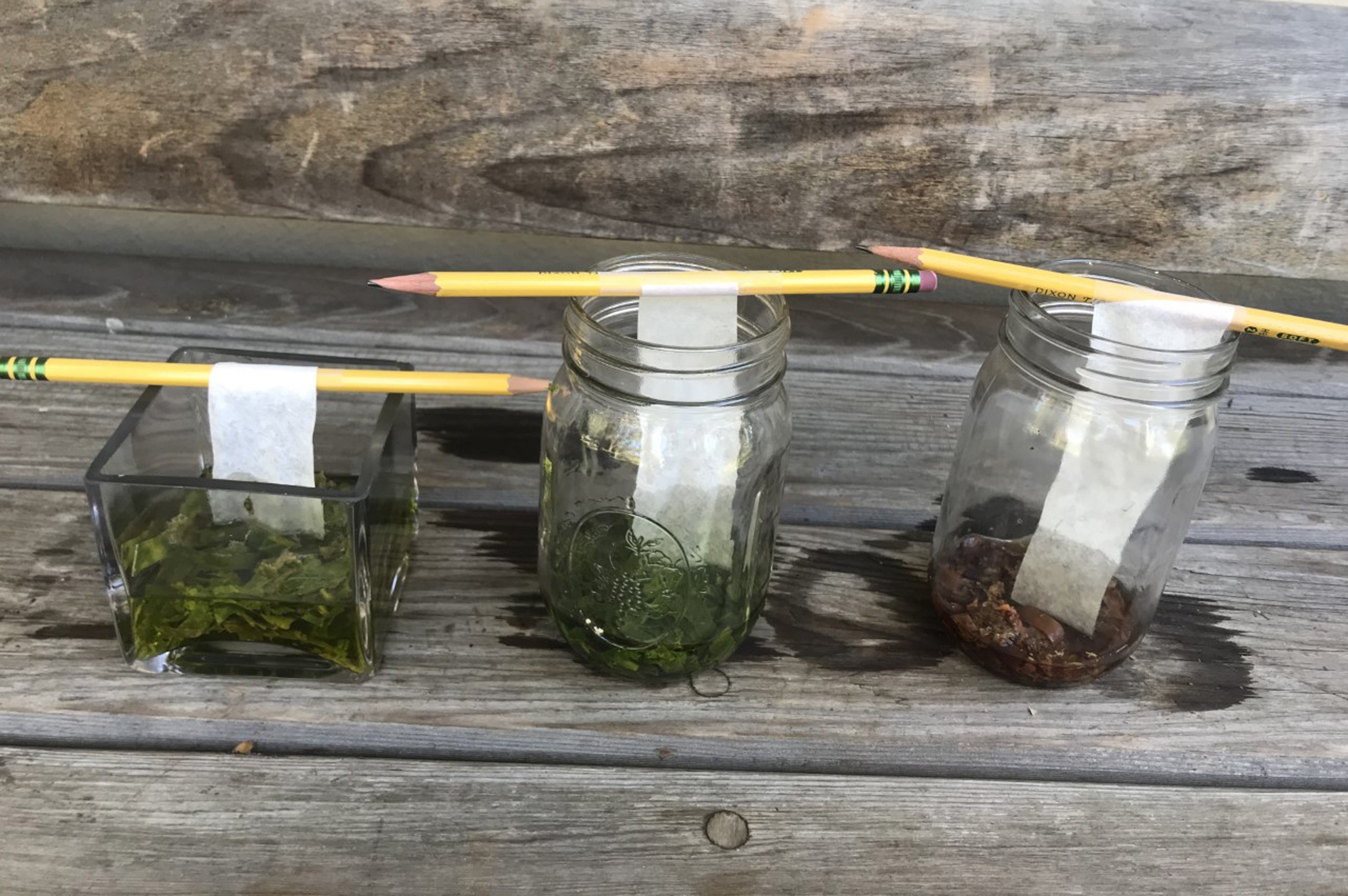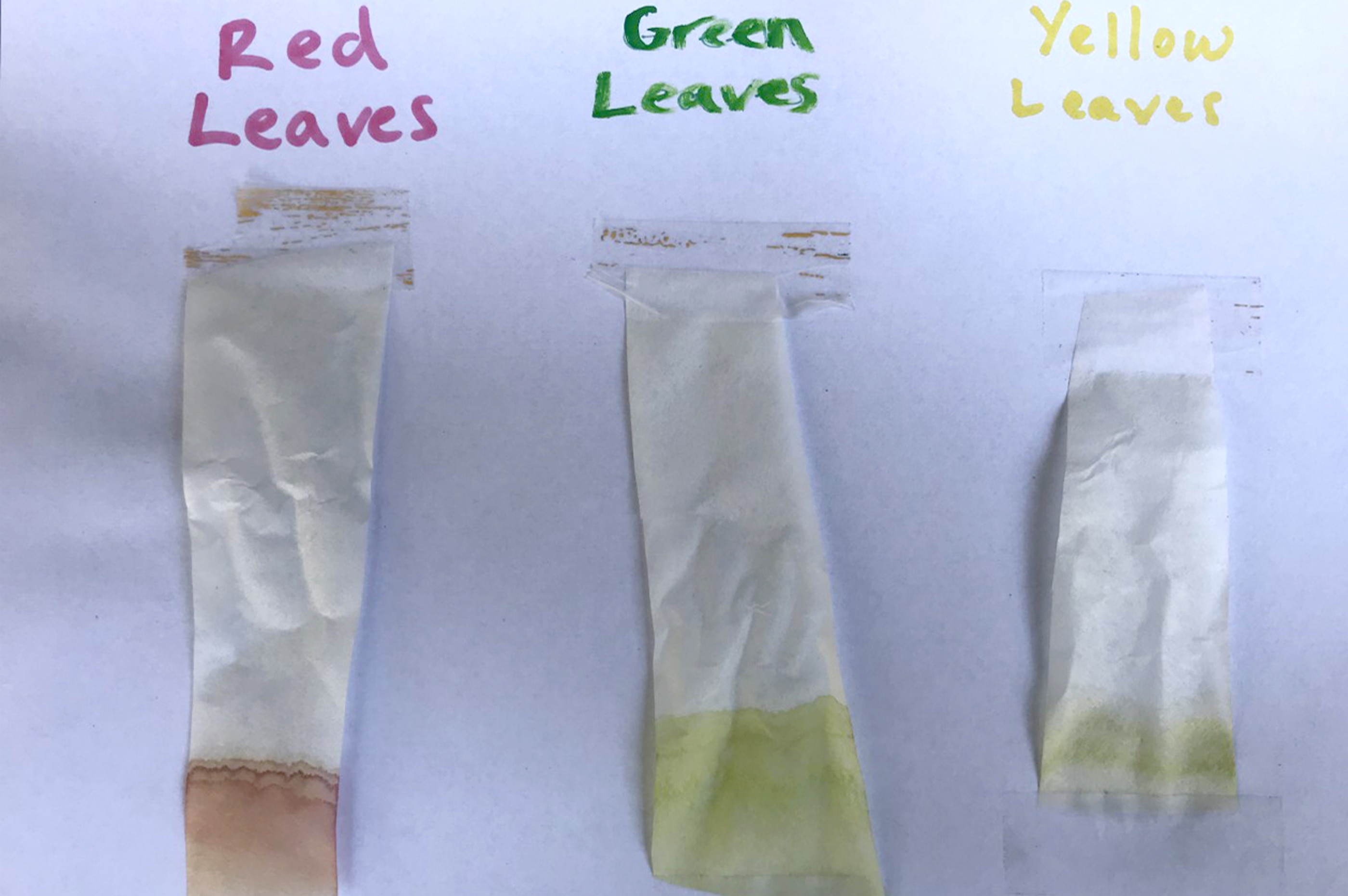During fall, it’s hard to miss the brilliant colors of leaves as they change from green to yellow, orange, red, or even purple. What gives leaves their color? You can get a good look using a simple technique called chromatography.
Chromatography is used in science labs to separate the components of a mixture, and it can be used to see the different pigments that color leaves. Collect a variety of fallen leaves that have changed colors as well as green leaves to see the different pigments that contribute to the way the leaves appear.
Method:
- Start with a batch of green leaves and cut them up with scissors until you have about a quarter cup of chopped leaves.
- Use the food processor or mortar and pestle to mash the chopped leaves into a fine pulp.
- Pour the pulpy leaves into the cup. What color do you see?
- Pour alcohol over the leaves to cover them and then stir.
- Put the cup in a dish of hot tap water for about 30 minutes, until the alcohol turns green as the pigments from the leaves are absorbed into it.
- Cut a strip out of the coffee filter paper, about 6 inches long and 1 inch wide.
- Attach the strip to the pencil or straw with a piece of tape. Make sure the bottom of the strip hangs straight.
- Place the pencil or straw over your cup. Adjust your paper strip so that the bottom just touches the leaf liquid in the cup.
- Wait and observe. What do you notice?
Results: Your leaf pulp should begin separating into bands of colors moving up the paper strip. Your results will vary depending on the type and color of leaf that you chose.
What’s happening here?
You may notice bands of color moving up the filter paper strip. During chromatography, a mixture is separated into parts when it passes through a medium (in this case, a coffee filter). The pigments will travel up the paper strip at different rates, allowing you to see all the different pigments in a single leaf. You might find a mix of colors inside your leaf, or different shades of the same color (for example, light green and dark green).
If there are many plant pigments, why are leaves green?
Leaves appear green because they contain chlorophyll, the most important pigment for photosynthesis. Photosynthesis converts sunlight into food. Leaves appear green when they contain more chlorophyll than any other pigment.
What are the other plant pigments?
The yellow pigments in leaves are called xanthophylls, red and purple pigments are called anthocyanins, and orange pigments are called carotenes (carotenes are easy to remember because they are orange like a carrot!). Different pigments absorb different kinds of light—the more pigments a plant has, the more types of light energy it is able to absorb.
But why do leaves change from green to other colors in the fall?
During fall, the sun goes down earlier and the temperature begins to drop. In response, leaves stop making food and the green chlorophyll breaks down. As chlorophyll disappears, some plant pigments that were there all along become more visible, and others are developed in response to the changing weather and day length. The tree’s response continues with the dropping of its leaves–a way for a tree to conserve energy over the winter.
Go on a Garden Quest and learn more! Each quest includes a short video, Garden exploration, and at-home activity.







